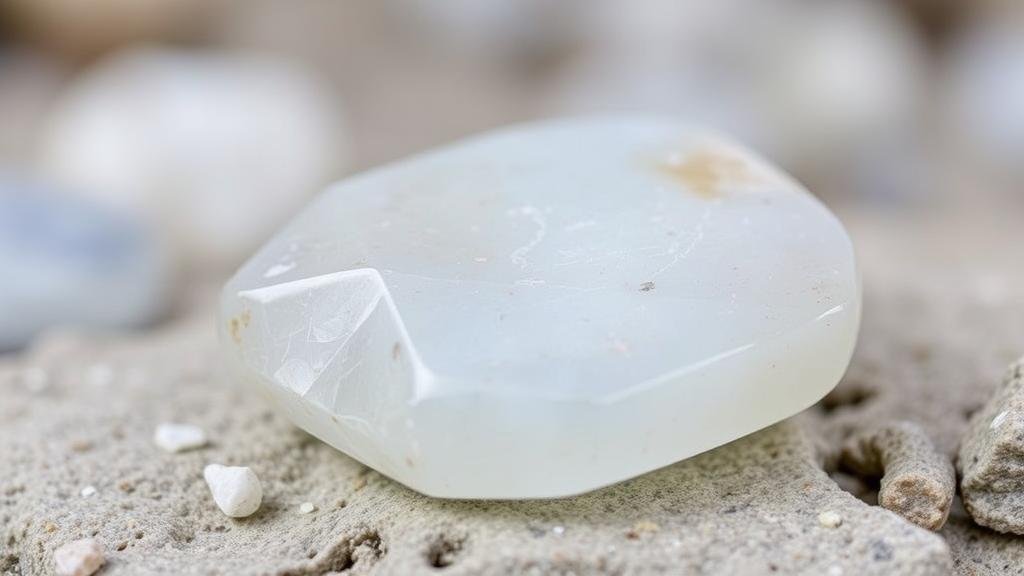The Hidden Colors of Moonstones: Unearthing Ancient Lunar Myths in Gemstone Form
The Hidden Colors of Moonstones: Unearthing Ancient Lunar Myths in Gemstone Form
Moonstones have captivated the hearts of rockhounds and mineral collectors alike, not just for their aesthetic appeal but also for the myriad myths and legends associated with the stone. Renowned for their adularescence–a phenomenon that creates a soft, billowy glow–moonstones evoke the mystical beauty of the moon from which they derive their name. This article explores the hidden colors of moonstones, their historical significance, and practical advice for collectors.
Understanding Moonstones: A Scientific Overview
Moonstones are a member of the feldspar mineral family, primarily composed of orthoclase and plagioclase. typically exhibit a unique optical phenomenon known as adularescence, which arises from the internal structure of the stone. As light interacts with the layered mineral compositions, it creates a luminescent glow that moves across the surface.
The most common color of moonstone is a transparent to translucent appearance, accentuated by a blue sheen; however, variations also come in peach, green, gray, and even colorless formats. These colorful variations can often be attributed to the specific proportions of minerals within the stone:
- Blue Moonstone: Primarily composed of potassium feldspar, it displays a strong blue sheen that reflects its association with lunar energy.
- Peach Moonstone: Contains a higher concentration of orthoclase, imparting a warm, peachy hue often linked to fertility and nourishment.
- Gray Moonstone: With a smoky appearance, it is characterized by subtle gray tones that reveal unique iridescence.
- Green Moonstone: A rarer variant, inflected with green hues, is often associated with growth and rejuvenation.
Historical Significance of Moonstones
Throughout history, moonstones have been revered across various cultures. In ancient Rome, they were believed to be formed from moonlight, and thus were associated with the lunar goddess Luna. The stone was thought to harness the powers of the moon, symbolizing serenity and emotional balance.
In India, moonstones are considered sacred and are believed to bring good fortune, enhancing ones intuition and fostering love. They are a popular gemstone for jewelry, particularly in bridal adornments, due to their association with romance and fidelity. This cultural significance is further reflected in historical references and literature, showcasing moonstones as symbols of both beauty and spiritual insight.
Collecting Moonstones: What to Look For
For rockhounds and collectors seeking to add moonstones to their collections, certain criteria can enhance the value and appeal of their acquisitions:
- Color: The intensity and hue of the moonstone are critical. Blue is often the most sought-after color due to its rarity and aesthetic value.
- Clarity: The fewer inclusions a moonstone has, the higher its quality. Opt for stones with minimal imperfections for greater visual appeal.
- Cut: The cut can significantly influence the overall brilliance. Cabochon cuts are traditional for moonstones, allowing for optimal display of adularescence.
- Origin: Stones sourced from known deposits like Sri Lanka, India, and Madagascar may carry higher value due to their reputable origins.
Practical Tips for Rockhounds
Rockhounds interested in collecting moonstones should consider the following practical tips to improve their experience:
- Research: Familiarize yourself with common moonstone types, their characteristics, and market values. Understanding the diversity of moonstones will make your collection more informed.
- Purchase from Reputable Sources: Ensure authenticity by sourcing moonstones from well-documented dealers or gem shows. Look for certificates of authenticity when available.
- Care and Maintenance: Moonstones should be cleaned with mild soap and water; avoid harsh chemicals or ultrasonic cleaners that could damage the stone.
- Display: Use UV filtering glass cases to showcase your collection. This will protect the stones from sunlight exposure, which can dull their luster.
Real-World Applications of Moonstones
Moonstones are not limited to collections; they also have practical applications in modern wellness and spirituality. Many practitioners of crystal healing believe that moonstones can balance emotions and amplify ones intuition, making them popular in meditation and healing practices. As such, they are often used in energy work or as talismans for new beginnings.
Conclusion: Embracing the Mystique of Moonstones
Moonstones are far more than exquisite gems; they embody ancient cultural narratives and healing properties that resonate with collectors. By understanding their unique characteristics and historical significance, enthusiasts can not only grow their collections but also connect with the age-old myths that surround these enchanting stones. As you explore the ethereal beauty of moonstones, remember to approach your collecting journey with openness and respect for the rich traditions they represent.
Whether youre a seasoned collector or a curious novice, moonstones offer a blend of beauty and mystery that invites deeper exploration into the realms of geology, history, and spiritual significance.



